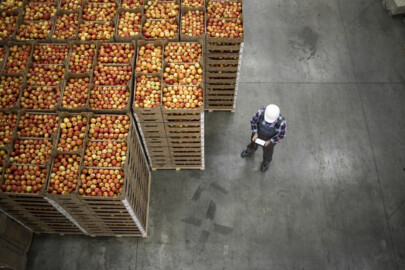Safe Quality Food (SQF) Certification Explained
SQF Certification stems from the Safe Quality Food standard, based on the Global Food Safety Initiative. Established in Australia in 1994, the SQF standard is a movement to achieve global food safety and quality standards that can be verified at every stage of food production. As it has grown, achieving SQF certification provides food growers, processors, and retailers across the global food entry the opportunity to prove that their procedures meet standards that can be agreed upon by countries all over the world.
We would like to share the importance of SQF certification and the process for obtaining it while highlighting the benefits for food companies in every country.
The Importance of SQF Certification for Food Safety
Unified food safety standards in the food industry are essential to public health. Looking back through history, we can see how food safety standards have developed over time and how enforcing regulations and sharing quality standards has ensured widespread food safety among global populations.
Incidents of unsafe food distribution often occur because global food supplies do not always align with safety standards. Therefore, SQF certification plays an important role in the broader context of food safety and quality assurance.
SQF allows food companies at every level of production to build trust with each other, consumers, and stakeholders by ensuring the quality of food products from the source to the final sale.
Understanding SQF
The SQF program provides a modular approach in its objectives to promote safe and quality food production across global food industries. There are three levels of SQF certifications that apply to different stages and quality levels of food production. This allows food safety and management systems to standardize expectations for food safety based on certification level.
-
SQF Level 1: “Fundamentals”
- Low-risk food products are rarely recalled
- Based on Good Agricultural Practices (GAP) for growers
- Based on Good Manufacturing Practices (GMP) for food manufacturing/processing
- Based on Good Distribution Practices (GDP) for food distributors
-
SQF Level 2: “Food Safety”
- Intermediate standards for many food types
- Builds on Level 1 requirements
- Based on Hazard Analysis and Critical Control Points (HACCP) regulations
-
SQF Level 3: “Food Safety and Quality”
- The gold standard of SQF-certified food safety and quality
- Builds on Levels 1 and 2
- Corrective action regarding identified risks
- Demonstrate emphasis on quality and safety
Food businesses at every level of production, from ground-level agriculture to processing and manufacturing to food distribution. SQF Certification ensures that your business can be trusted by other food businesses and public consumers to provide high-quality and safe food products.
The Process of Obtaining SQF Certification
When considering obtaining a certification, naturally, you want to know the process required to get certified. The SQF certification process is approachable and makes certification easy to achieve once your operations meet the qualification standards. You can also start at any level of certification and increase your certification level at any time in the future.
- Register Your Food Company
- Choose Your Target SQF Level (1, 2, or 3)
- Prepare Your SQF Practitioner
- Designate a full-time employee as your SQF Practitioner
- Send them through HACCP Training
- Competently Implement Level1 (Good Agriculture/Aquaculture/Manufacturing/Distribution Practices)
- Understand SQF Code and Requirements
- Document Your SQF System
- The standards you maintain
- How you maintain those standards
- Demonstrate compliance
- Request a Pre-Assessment
- Receive a no-risk inspection from an SQF Auditor
- Identify gaps in your program
- Remedy gaps in your program
- Schedule an SQF Certification Audit
- Request and schedule an audit with the Certification Body
- Undergo an Official SQF Audit
- Receive Your SQF Certification
During this process, remember that documentation, record-keeping, and implementing an effective Food Safety Management System (FSMS) are essential to meeting SQF standards and proving your maintenance of these standards over time.
Key Principals
One of the key principles of SQF certification is Hazard Analysis and Critical Control Points (HACCP). Distribution centers must conduct thorough hazard analyses to identify potential risks to food safety and implement control measures to mitigate these risks. This proactive approach helps prevent contamination and ensures that food products meet stringent safety standards.
In addition to HACCP, SQF certification emphasizes the importance of Good Manufacturing Practices (GMPs). Distribution centers must adhere to strict guidelines regarding hygiene, sanitation, and facility maintenance to minimize the risk of foodborne illnesses. This includes proper cleaning and sanitation protocols, pest control measures, and employee hygiene practices.
Temperature control is another critical aspect of SQF certification for distribution centers, especially for perishable food products. Maintaining proper temperature throughout the storage and transportation process is essential to prevent spoilage and maintain product quality. Distribution centers must have reliable refrigeration systems in place and implement temperature monitoring procedures to ensure compliance with regulatory requirements.
Traceability is also a key requirement of SQF certification. Distribution centers must have robust systems in place to trace the movement of food products throughout the supply chain. This includes accurately documenting incoming and outgoing shipments, maintaining records of product information and batch numbers, and implementing procedures to recall products if necessary.
Employee training and education are essential components of SQF certification for distribution centers. Employees must receive comprehensive training on food safety practices, including proper handling and storage procedures, sanitation protocols, and emergency response plans. By investing in employee education, distribution centers can ensure that all staff members understand their roles and responsibilities in maintaining food safety and quality.
Maintaining SQF Certification
Like any certification, you will need to undergo annual recertification audits and make continual improvements to your FSMS to maintain your SQF-certified status. Achieving and maintaining SQF certification requires ongoing commitment and dedication from distribution centers. It involves regular audits and inspections to verify compliance with SQF standards and identify areas for improvement.
Companies can ensure they remain compliant and improve their SQF qualifications through regular training, internal audits, and staying up to date on the evolution of food safety regulations.
Benefits of SQF Certification for Food Companies
Being certified carries many significant advantages for food businesses at every level of production. Achieving and maintaining SQF certification can help improve your food safety, emphasize your focus on quality, and increase trust in your business. Building a professional network of SQF-certified food businesses to supply and deliver can reduce the population’s risk of foodborne illnesses and increase overall food quality.
Companies that secure SQF certification gain enhanced market access as well, not just to local markets but to international markets, who are able to trust their food quality as a result of the certification.
Maintaining SQF standards can provide a potential for cost-savings and more efficient operations, help you reduce waste, and minimize the risk of product recalls due to robust internal food safety procedures.
Certification can also strengthen your relationship with retailers, suppliers, and consumers by demonstrating a shared commitment to food safety and quality.
Embracing Safe Quality Food Certification
If you are considering SQF certification for your food business, this is a wise decision to make. SQF provides you with a globally recognized standard for food safety and quality, connecting you with the potential for international market sales and business partners by earning the trust of the global food industry through a proven dedication to food quality.
Food companies should consider pursuing SQF certification as a means to enhance food safety practices, competitive advantage, and market reputation. Once you secure the first level of certification, you can also increase your cert levels over time with each year of safety and quality improvements, opening further doors to success, trust, and growth.
Learn More About SQF Certification
SQF certification is a valuable set of standards to learn about and implement. Research and training offer significant benefits to your operations, even before your first certificate is obtained. Explore resources for starting your certification process or improving your existing food safety management systems.
SQF certification provides a framework for distribution centers to implement rigorous food safety and quality management systems. It covers various aspects of operations, including storage, handling, and transportation, to ensure that food products remain safe and of high quality throughout the supply chain.
At Symbia Logistics, we are proud to work with SQF-certified food businesses and those preparing for their first certification. Contact us to connect with a GDP-compliant distribution team ready to encourage your journey to SQF certification.










